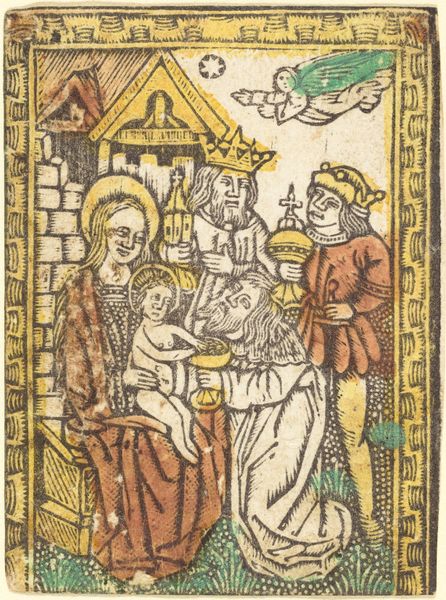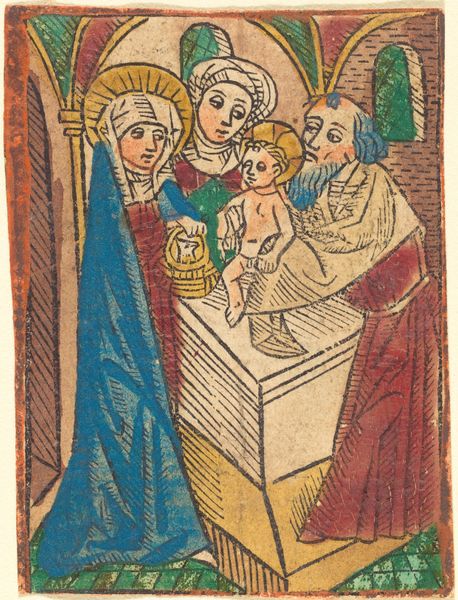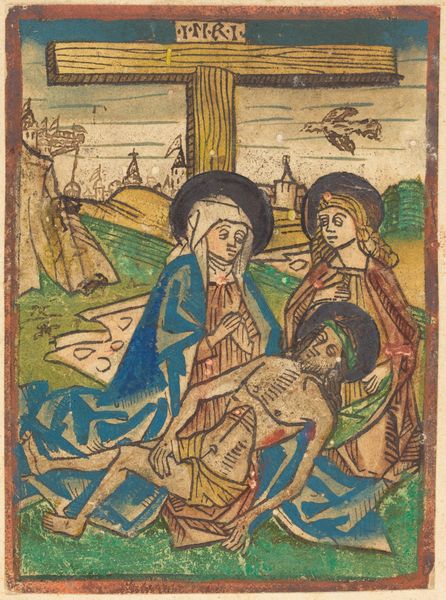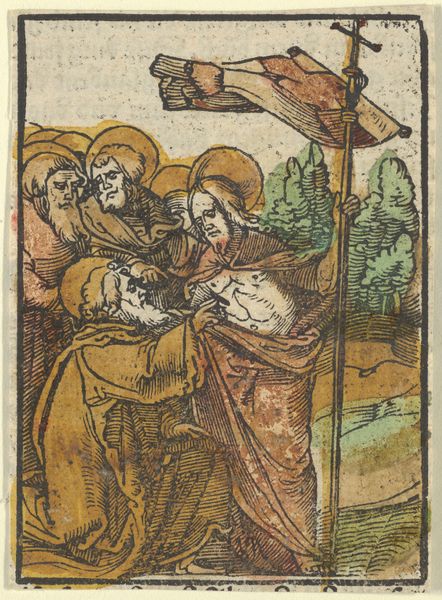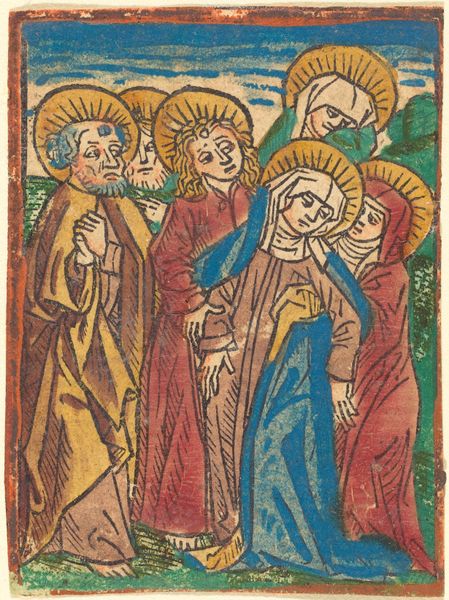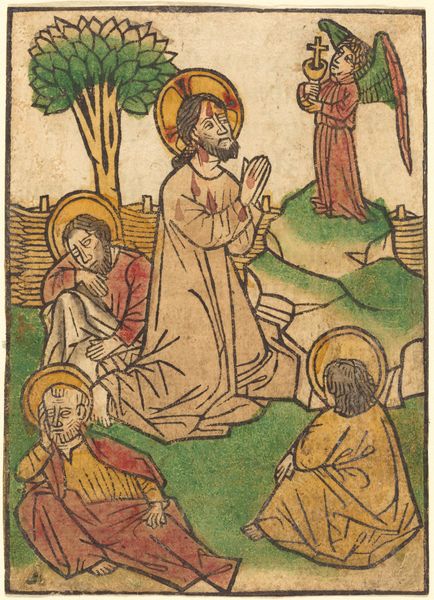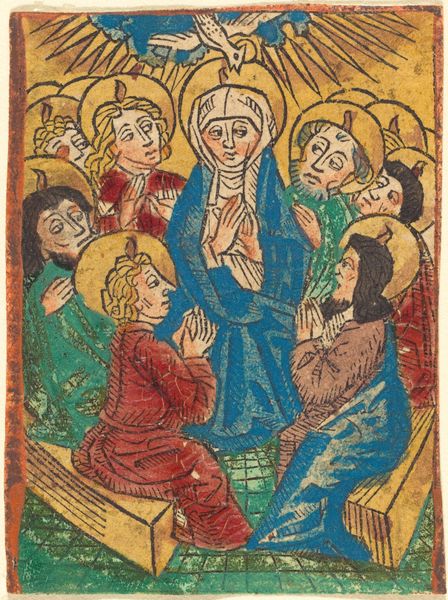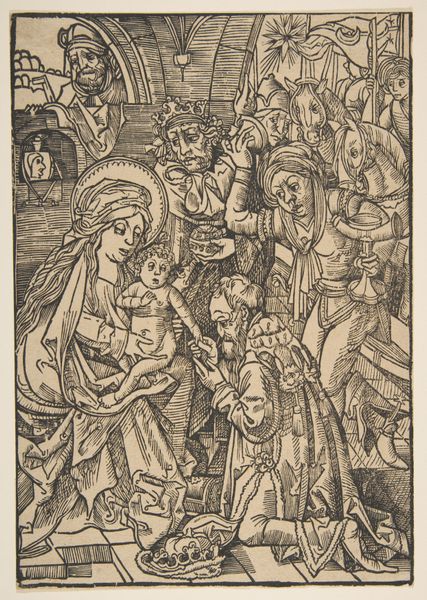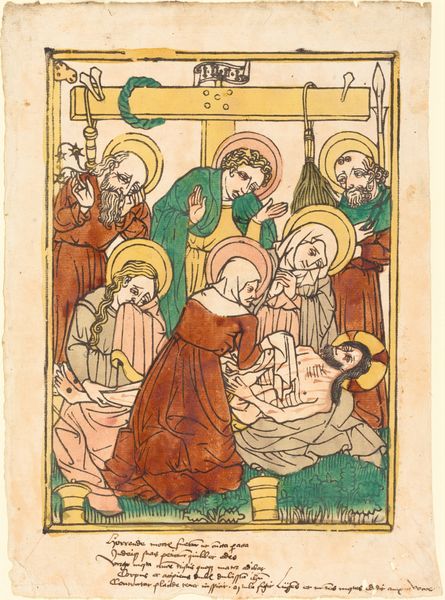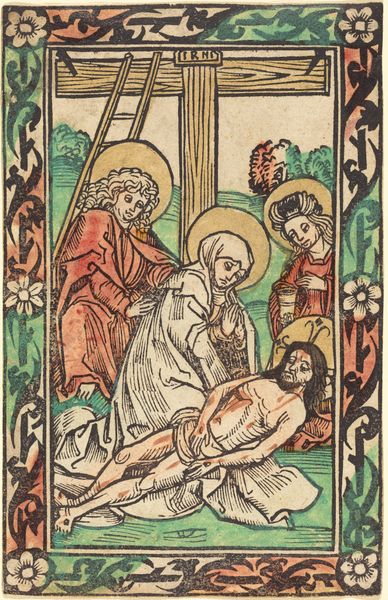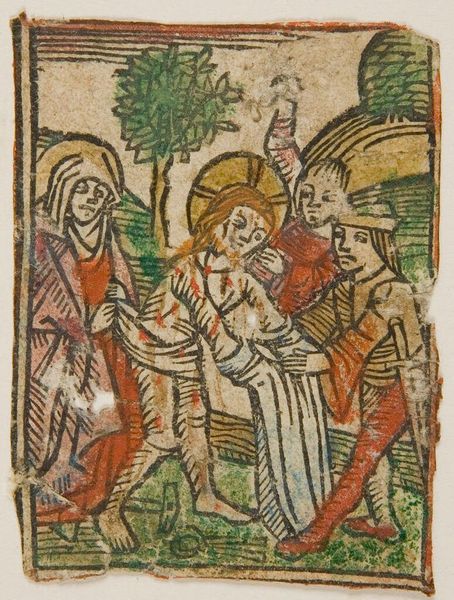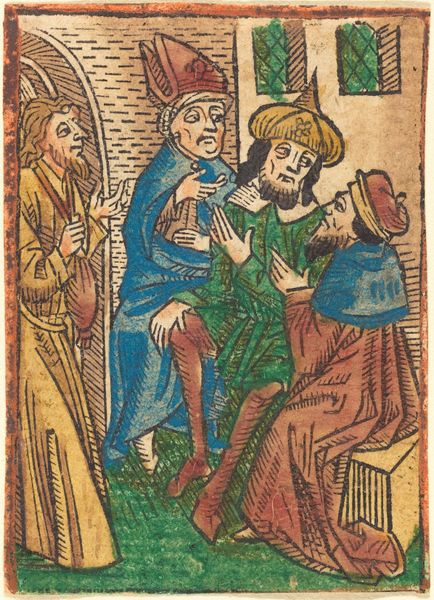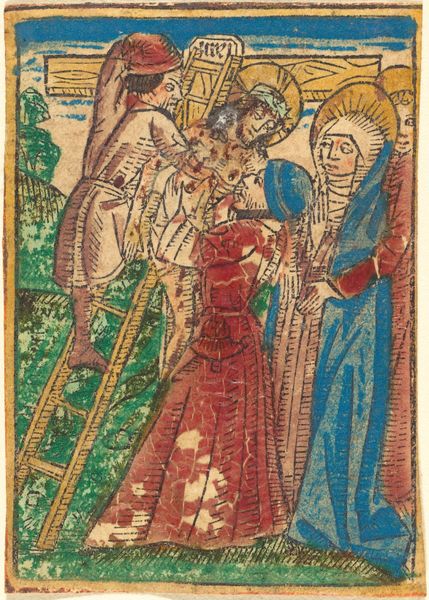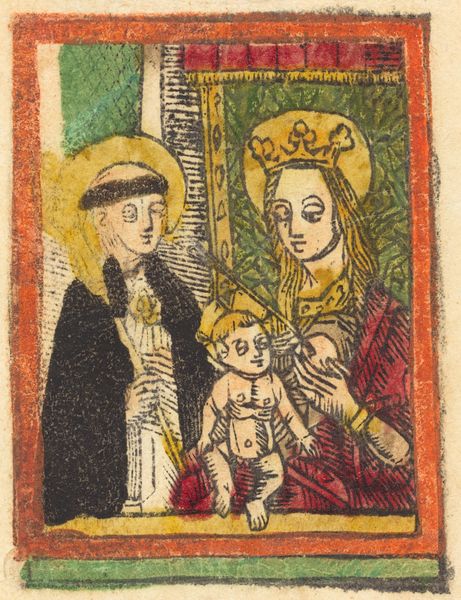
print, woodcut
#
medieval
#
narrative-art
# print
#
landscape
#
figuration
#
woodcut
#
history-painting
Copyright: National Gallery of Art: CC0 1.0
Curator: Welcome. Before us is "Madonna and Saint Bridget," a woodcut from around 1480 to 1500, crafted by an anonymous artist. The scene depicts the Madonna and Child with Saint Bridget against a stylized landscape. Editor: It's quaint. My initial impression is one of constrained serenity; it’s visually calming yet emotionally reserved. The somewhat rigid lines of the woodcut enhance that stillness. Curator: Right. Prints like these had an essential social role. Distributed widely, they democratized religious iconography, spreading devotion. Notice the landscape and the text at the bottom. These aren’t just aesthetic choices, but crucial for communicating meaning to a broad audience. The background includes a walled city; a river threads into the distance; above this the divine apparition and the two intercessors form a composite image. Editor: The composition definitely feels very deliberate, and the figures—especially Bridget’s expression—communicate resignation and, I dare say, humility? This reflects her life as a visionary, her role in establishing her own order, but ultimately submitting herself to divine will. Where does that intersect with female power, even sanctioned power, within the Catholic Church? It raises some interesting questions about agency. Curator: Precisely. Bridget was indeed a formidable figure, canonized in 1391. This print serves to amplify both her sanctity and, importantly, the theological narratives popular during that time. Saint Bridget is mediating or bearing witness; the artist wanted to position her not just as a historical figure but as an active participant in a spiritual reality. Editor: And what about the heraldic shield towards the base? Is that connected to a specific patronage or to a place the work was designed for? That might lend further insight into its intended viewership and purpose. I find myself focusing on how it uses simple visual language, landscape, architecture, text and heraldry to broadcast social values. Curator: An excellent observation. This type of print wasn't simply devotional, it often bolstered familial or local identities, effectively linking faith with secular authority. Editor: Well, considering how profoundly these intertwined histories continue to shape our world, the artwork’s enduring resonance is hardly surprising. Curator: Indeed. Thinking through the historical forces at work provides greater appreciation for this artwork's purpose as something that reinforced religious devotion but also social structures.
Comments
No comments
Be the first to comment and join the conversation on the ultimate creative platform.
